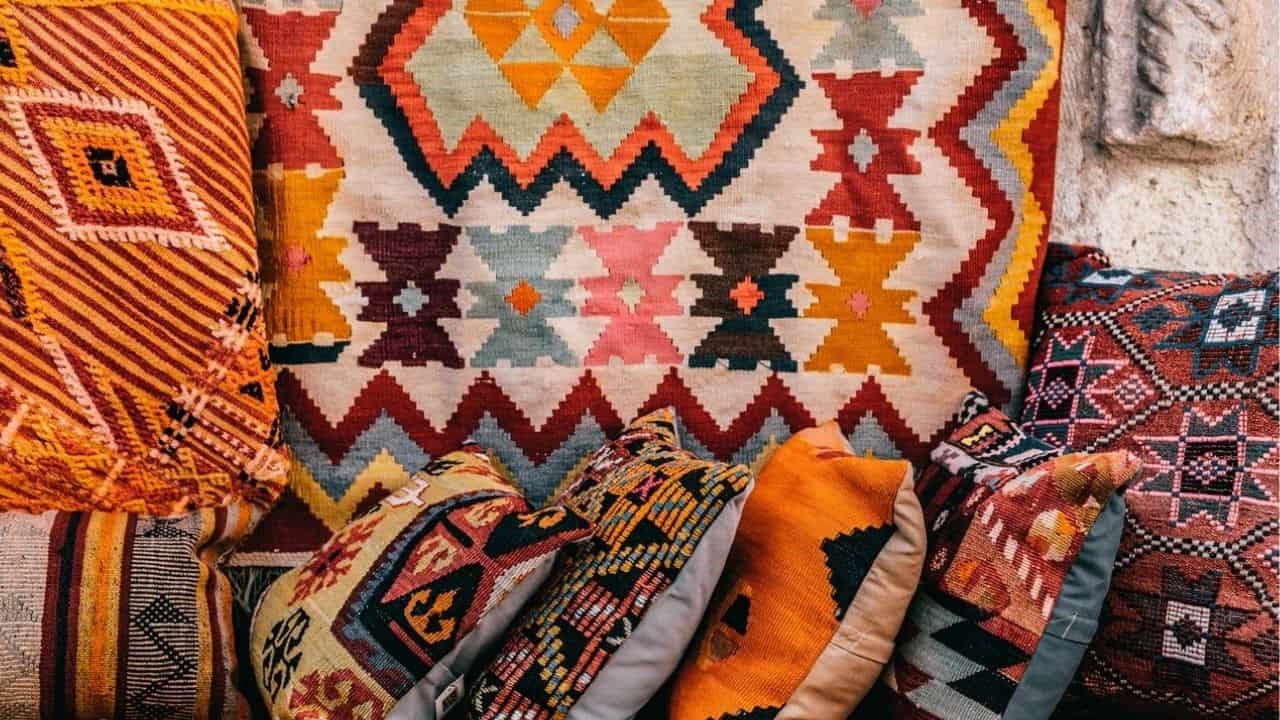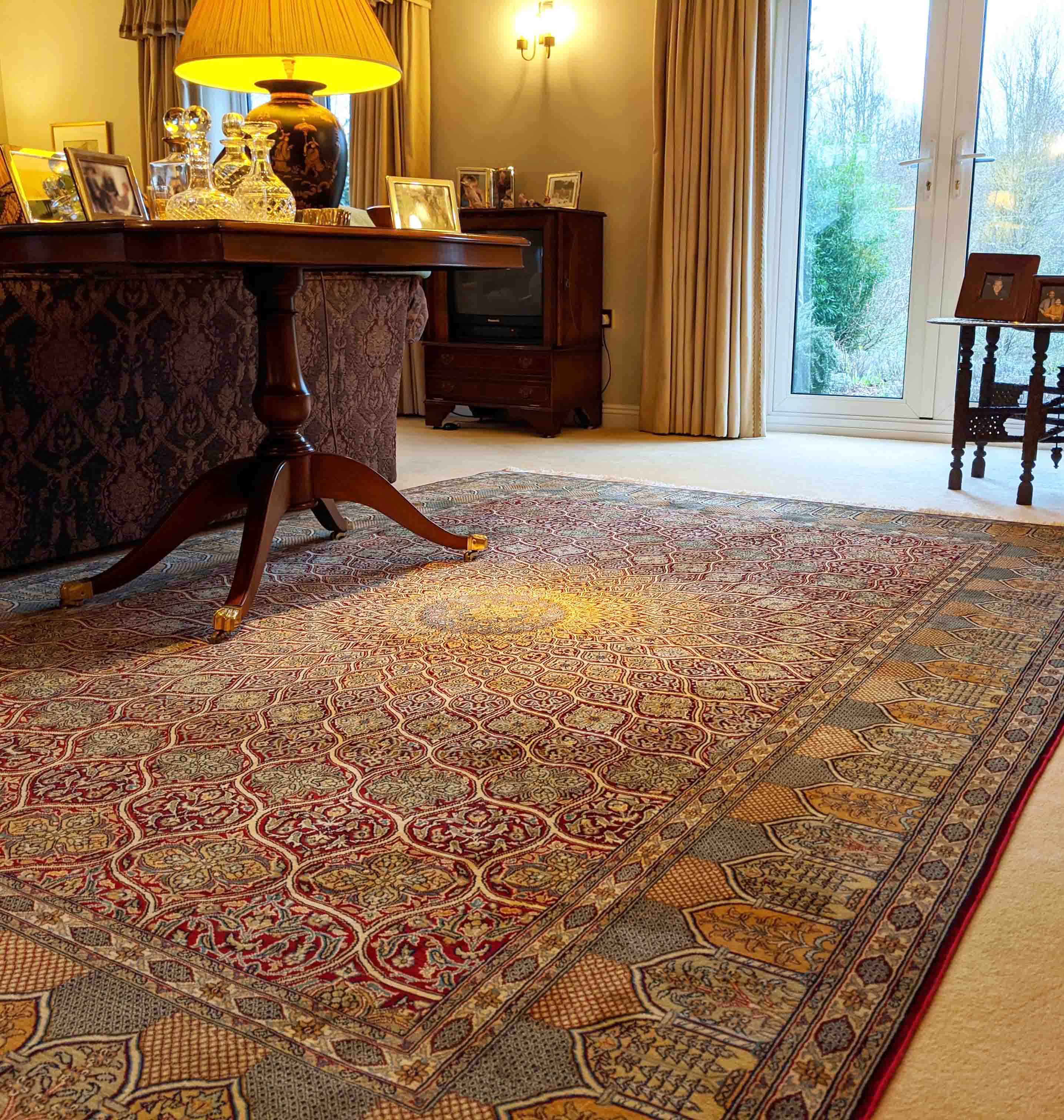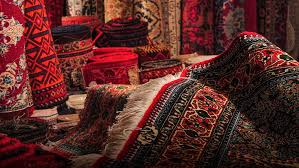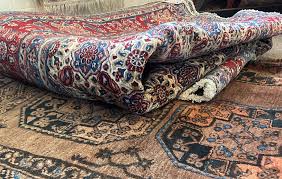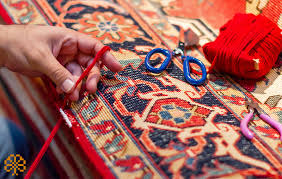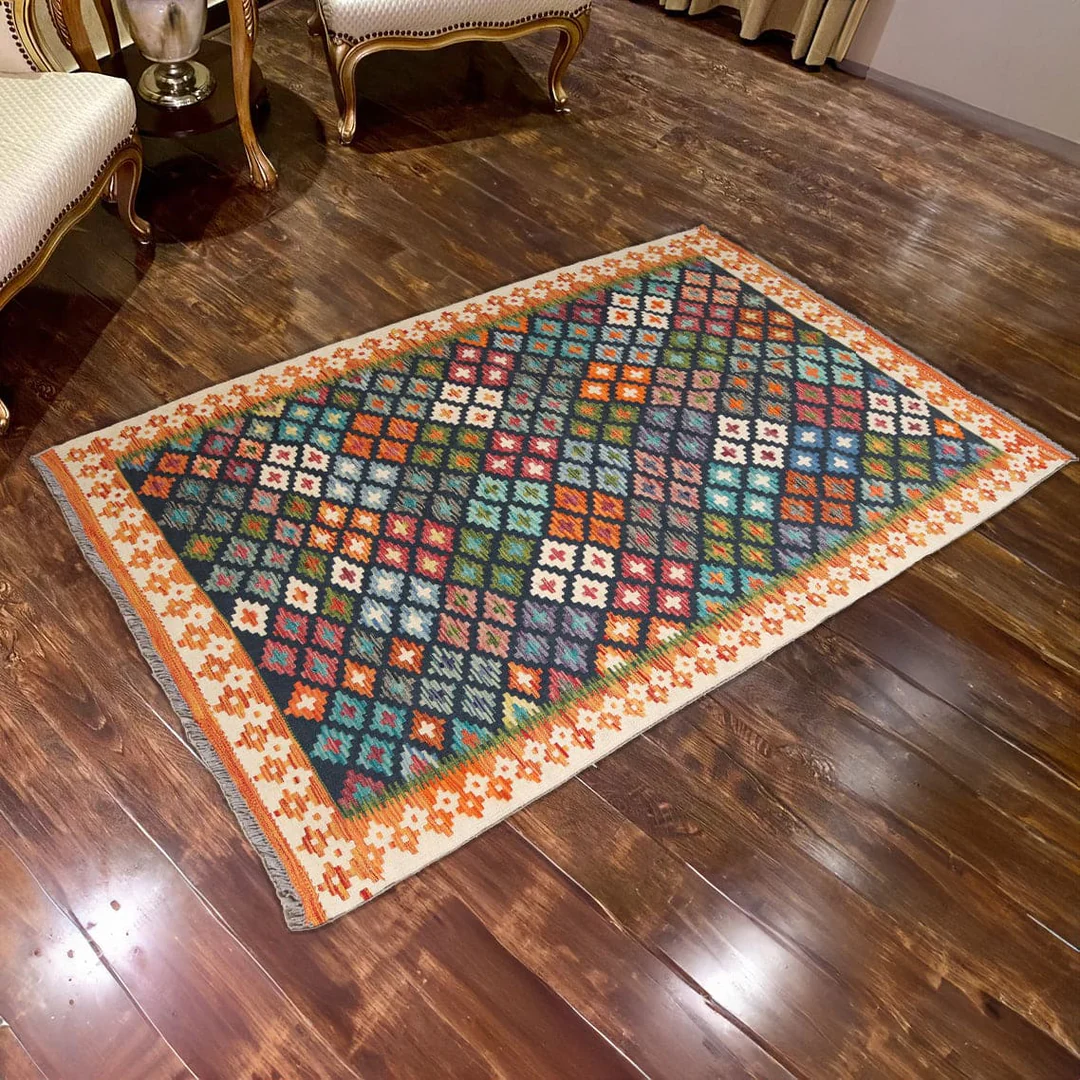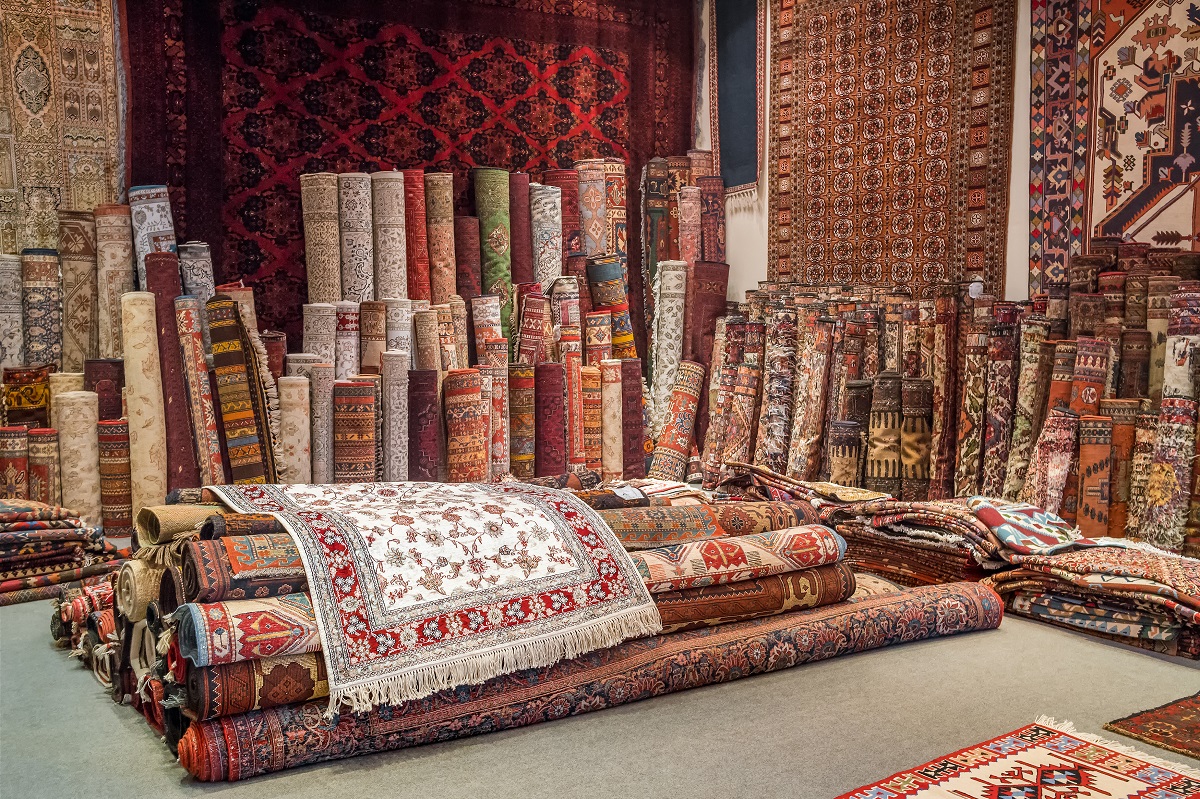Tribal Carpets: A Legacy of Craftsmanship and Culture
In a world where modern design often overshadows tradition, tribal carpets stand out as vibrant testaments to craftsmanship and cultural heritage. Each piece tells a story, woven through generations, reflecting the rich histories of the tribes that created them. From the intricate patterns to the vivid colors, these carpets are not merely decorative items but living artworks that embody the spirit and identity of their makers. As we embark on this journey through tradition, craftsmanship, and culture, we will unravel the beauty of tribal carpets, revealing the intricate techniques and profound meanings behind every knot and weave. Join us as we explore how these stunning textiles connect us to a deeper understanding of artistry and the cultural tapestries that shape our world. Whether you are a collector, enthusiast, or simply curious, this exploration promises to ignite a newfound appreciation for the timeless allure of tribal carpets. The Historical Significance of Tribal CarpetsTribal carpets have a long and storied history that dates back thousands of years. Originating from nomadic and semi-nomadic tribes, these carpets were not just utilitarian items but also served as essential cultural artifacts. They were used to cover floors, walls, and even as seating, providing warmth and comfort in harsh climates. Beyond their practical uses, tribal carpets were imbued with deep symbolic meanings and were often created to mark significant life events such as births, marriages, and deaths. Each carpet was a unique reflection of the weaver's personal experiences, beliefs, and aspirations. The historical significance of tribal carpets is also linked to the trade routes that connected different regions and cultures. The Silk Road, for instance, played a crucial role in the dissemination of carpet weaving techniques and designs across continents. As traders and travelers moved along these routes, they carried with them not only goods but also stories and traditions. This cultural exchange led to a rich tapestry of influences that can be seen in the diverse styles of tribal carpets found around the world. The interplay of different motifs, colors, and weaving techniques is a testament to the dynamic and interconnected history of human civilization. Moreover, tribal carpets have served as important historical documents, preserving the heritage and identity of the tribes that created them. The patterns and symbols woven into these carpets often contain encoded messages and ancestral knowledge that have been passed down through generations. For many tribes, carpet weaving is a revered art form that plays a central role in their cultural continuity. By studying these carpets, historians and anthropologists can gain valuable insights into the social structures, religious beliefs, and daily lives of ancient communities. In this way, tribal carpets are not only beautiful works of art but also vital links to our collective past.Understanding the Craftsmanship Behind Tribal CarpetsThe creation of tribal carpets is a labor-intensive process that requires a high degree of skill and dedication. The craftsmanship involved in weaving these carpets is often passed down through generations, with each weaver learning the techniques and secrets from their elders. The process begins with the preparation of the materials, which typically include wool, cotton, or silk. The wool is often hand-spun and dyed using natural dyes derived from plants, minerals, and insects. This meticulous preparation ensures that the final product is of the highest quality and has a vibrant, lasting color. Once the materials are ready, the weaver begins the intricate process of knotting the carpet. This involves tying individual knots onto a foundation of warp and weft threads, creating the dense, textured surface that characterizes tribal carpets. There are different knotting techniques, such as the symmetrical Turkish knot and the asymmetrical Persian knot, each producing a distinct texture and appearance. The choice of technique often depends on the region and the specific traditions of the tribe. The weaver must also pay close attention to the tension of the threads, ensuring that the knots are uniform and the pattern remains consistent throughout the carpet. The design of a tribal carpet is typically planned out in advance, either drawn on a grid or committed to memory. The patterns are often geometric and symmetrical, featuring motifs that hold cultural and symbolic significance. These motifs can include stylized animals, plants, and abstract forms, each with its own meaning. For example, a diamond shape might symbolize protection, while a zigzag line could represent water or a journey. The weaver must carefully follow the design, counting the knots and rows to ensure that the pattern unfolds correctly. This requires not only technical skill but also a deep understanding of the cultural and symbolic language of the motifs.The Cultural Symbolism of Tribal Carpet DesignsThe designs found in tribal carpets are rich with cultural symbolism, reflecting the beliefs, values, and experiences of the tribes that create them. Each motif and pattern carries specific meanings, often serving as a form of visual storytelling. For instance, geometric shapes such as diamonds, hexagons, and stars are commonly used to represent concepts like protection, unity, and the cosmos. These shapes are not chosen at random but are deeply rooted in the cultural and spiritual traditions of the weavers. By incorporating these symbols into their carpets, the weavers are able to convey complex ideas and narratives in a visual form. In addition to geometric patterns, tribal carpets often feature stylized representations of animals, plants, and other elements of the natural world. These motifs are not only decorative but also hold symbolic significance. For example, a bird might symbolize freedom or the soul, while a tree could represent life and growth. The use of natural motifs reflects the close relationship between the tribes and their environment, as well as their reverence for the natural world. These symbols also serve as a means of preserving and transmitting cultural knowledge, as they often contain encoded information about the tribe's history, beliefs, and practices. Color also plays a crucial role in the symbolism of tribal carpet designs. Different colors are associated with specific meanings and emotions, and the choice of colors can convey important messages. For example, red is often associated with vitality, courage, and protection, while blue might symbolize tranquility, wisdom, and the divine. The use of natural dyes, which are derived from plants, minerals, and insects, adds another layer of meaning to the colors, as these dyes are often chosen for their cultural and symbolic significance. The careful selection and combination of colors and motifs result in a rich tapestry of meanings that can be read and interpreted by those familiar with the cultural context. Different Types of Tribal Carpets Around the WorlTribal carpets can be found in various regions around the world, each with its own unique styles and traditions. One of the most well-known types of tribal carpets is the Persian carpet, which originates from Iran. Persian carpets are renowned for their intricate designs, fine craftsmanship, and rich colors. They often feature floral and geometric patterns, as well as motifs inspired by Persian mythology and literature. The different regions of Iran, such as Tabriz, Kashan, and Isfahan, each have their own distinctive styles, reflecting the diverse cultural heritage of the country. Another notable type of tribal carpet is the Caucasian carpet, which comes from the Caucasus region between the Black Sea and the Caspian Sea. These carpets are characterized by their bold, geometric patterns and vibrant colors. The designs often include stylized animals, plants, and symbols that hold cultural significance. Caucasian carpets are typically made using the symmetrical Turkish knot, which gives them a dense, durable texture. The different tribes and regions within the Caucasus, such as the Kazakhs, Shirvans, and Daghestanis, each have their own unique styles and motifs. In addition to Persian and Caucasian carpets, there are many other types of tribal carpets from around the world. For example, Turkish carpets, also known as Anatolian carpets, are famous for their rich colors and intricate designs. These carpets often feature geometric patterns, as well as motifs inspired by Islamic art and architecture. Similarly, Central Asian carpets, such as those from Turkmenistan and Uzbekistan, are known for their bold, geometric designs and vibrant colors. Each type of tribal carpet reflects the unique cultural heritage and artistic traditions of the region, offering a fascinating glimpse into the diverse world of tribal weaving.The Materials Used in Tribal Carpet WeavingThe materials used in tribal carpet weaving are carefully chosen to ensure the highest quality and durability. One of the most common materials is wool, which is prized for its softness, strength, and insulating properties. Wool is often sourced from local sheep, and the quality of the wool can vary depending on the breed of sheep and the conditions in which they are raised. The wool is typically hand-spun, a process that requires skill and patience. Hand-spinning allows the weaver to control the thickness and texture of the yarn, resulting in a more unique and high-quality product. In addition to wool, other materials such as cotton and silk are also used in tribal carpet weaving. Cotton is often used for the warp and weft threads, providing a strong and stable foundation for the carpet. Silk, on the other hand, is used for its luxurious texture and natural sheen. Silk carpets are typically more delicate and require more care, but they are also highly prized for their beauty and elegance. The choice of materials can have a significant impact on the final appearance and quality of the carpet, and skilled weavers know how to select and combine materials to achieve the desired effect. Natural dyes are another important component of tribal carpet weaving. These dyes are derived from a variety of sources, including plants, minerals, and insects. For example, indigo, which is derived from the leaves of the indigo plant, is used to produce a rich blue color. Madder root is used to create shades of red, while walnut husks can produce brown and black hues. Natural dyes are preferred for their vibrant and lasting colors, as well as their cultural and symbolic significance. The process of dyeing the yarn is an art in itself, requiring knowledge of the different dye sources and techniques to achieve the desired colors and effects. The Role of Tribal Carpets in Contemporary Interior DesignTribal carpets have found a special place in contemporary interior design, where they are appreciated for their unique beauty, craftsmanship, and cultural significance. These carpets add a touch of authenticity and character to modern spaces, creating a bridge between the past and the present. Their intricate patterns and vibrant colors can complement a wide range of interior styles, from traditional to contemporary, and they can be used in various ways to enhance the overall aesthetic of a room. In contemporary interior design, tribal carpets are often used as statement pieces, drawing the eye and adding visual interest to a space. They can be placed on the floor, hung on walls, or used as decorative accents on furniture. The rich textures and intricate designs of tribal carpets can create a sense of warmth and coziness, making a space feel more inviting and comfortable. Their unique patterns and colors can also serve as inspiration for other elements of the design, such as color schemes, furniture choices, and decorative accessories. Moreover, tribal carpets are valued for their cultural and historical significance, which adds a deeper layer of meaning to the design. Incorporating these carpets into a space can create a sense of connection to different cultures and traditions, fostering a greater appreciation for the diversity and richness of human creativity. In a world where mass-produced items are becoming increasingly common, tribal carpets offer a unique and meaningful alternative. Each carpet is a one-of-a-kind piece of art, crafted by skilled artisans using traditional techniques passed down through generations. By incorporating tribal carpets into contemporary interior design, we not only enhance the beauty of our spaces but also honor and preserve the cultural heritage and craftsmanship of these remarkable textiles.Caring for and Maintaining Tribal CarpetsProper care and maintenance are essential to preserving the beauty and longevity of tribal carpets. These carpets are valuable works of art, and with the right care, they can be enjoyed for generations. One of the most important aspects of caring for a tribal carpet is regular cleaning. Vacuuming the carpet regularly can help remove dirt and dust that can accumulate and cause wear over time. It is important to use a vacuum with a gentle suction setting to avoid damaging the delicate fibers. For more thorough cleaning, it is recommended to seek the services of a professional who specializes in cleaning antique and handmade carpets. In addition to regular cleaning, it is important to protect tribal carpets from damage caused by sunlight, moisture, and heavy foot traffic. Prolonged exposure to direct sunlight can cause the colors to fade, so it is advisable to place the carpet in a location where it is protected from harsh sunlight or to use curtains or blinds to shield it. Moisture can also cause damage to the fibers and dyes, so it is important to avoid placing the carpet in damp or humid areas. If the carpet does get wet, it should be dried thoroughly to prevent mold and mildew growth. To protect the carpet from heavy foot traffic, it is a good idea to use rugs or mats in high-traffic areas and to rotate the carpet periodically to ensure even wear. Another important aspect of caring for tribal carpets is addressing any repairs or damage promptly. Small tears, loose threads, or worn areas should be repaired as soon as possible to prevent further damage. It is best to seek the services of a professional who specializes in repairing handmade carpets, as they will have the knowledge and skills to restore the carpet without compromising its integrity. By taking these steps to care for and maintain tribal carpets, we can ensure that these beautiful and culturally significant textiles continue to be cherished and enjoyed for many years to come. Where to Buy Authentic Tribal CarpetsFinding authentic tribal carpets can be a rewarding experience, but it requires some knowledge and careful consideration. Authentic tribal carpets are handmade and often reflect the cultural heritage and craftsmanship of the tribes that create them. They can be found in various places, including specialized carpet shops, antique stores, and online marketplaces. When purchasing a tribal carpet, it is important to do some research and seek out reputable dealers who have a good understanding of the origins and quality of the carpets they sell. One of the best places to buy authentic tribal carpets is from specialized carpet shops that focus on handmade and antique carpets. These shops often have knowledgeable staff who can provide information about the carpets' origins, materials, and craftsmanship. They may also have a wide selection of carpets from different regions and tribes, allowing buyers to find a piece that suits their tastes and preferences. Visiting a carpet shop in person also provides an opportunity to see and feel the carpets, which can be helpful in assessing their quality and authenticity. Antique stores and auctions can also be good sources for authentic tribal carpets. These venues often have a selection of older and rare carpets that may not be available elsewhere. When buying from an antique store or auction, it is important to ask for documentation or provenance information that verifies the carpet's age and origin. This can help ensure that the carpet is indeed an authentic tribal piece and not a modern reproduction. Online marketplaces and websites specializing in handmade carpets can also offer a wide selection of tribal carpets. However, it is important to exercise caution and buy from reputable sellers with positive reviews and a history of selling authentic items. By taking the time to find a trustworthy source, buyers can acquire a beautiful and genuine tribal carpet that will be a cherished addition to their collection.

